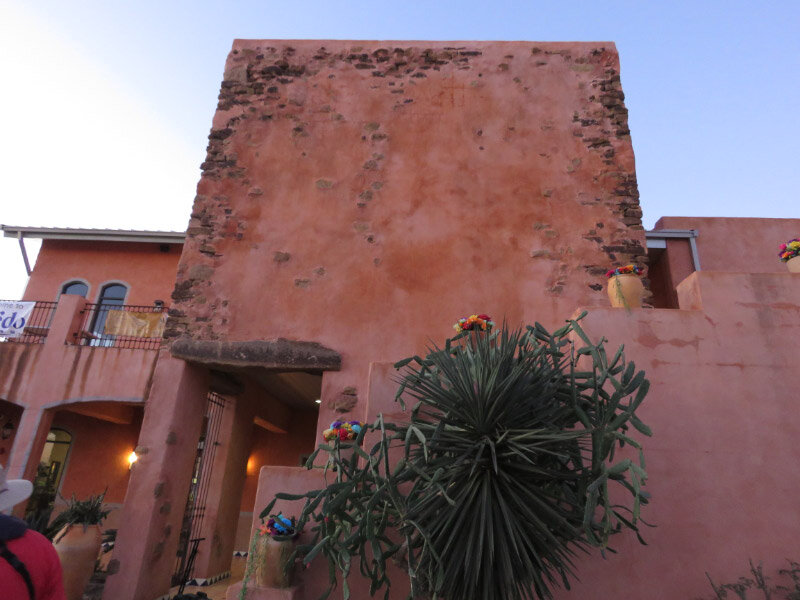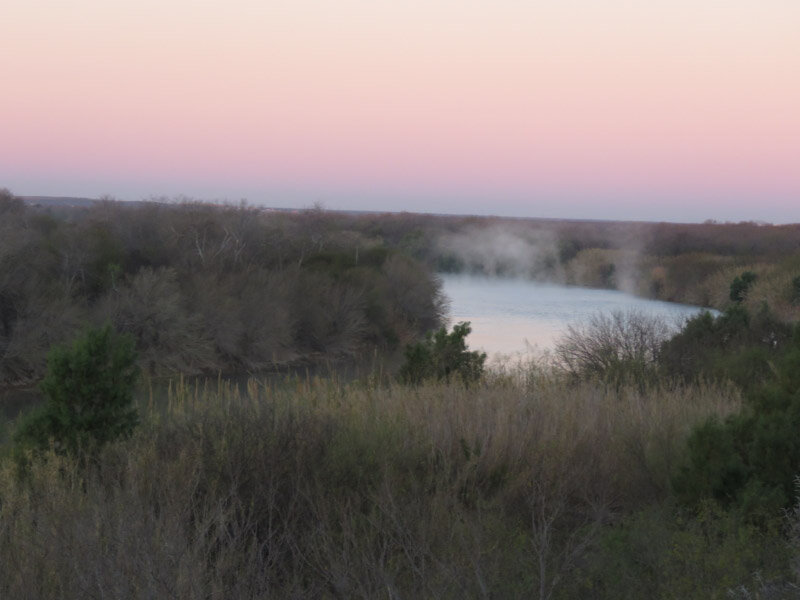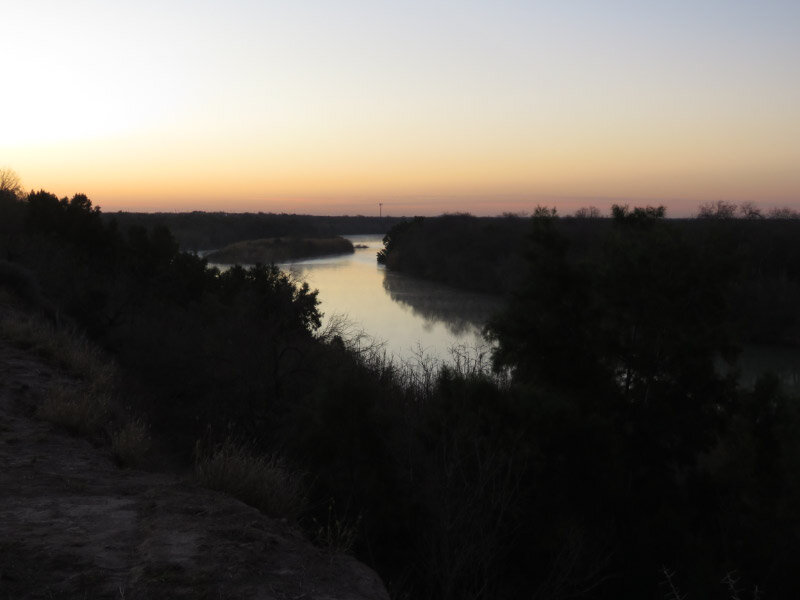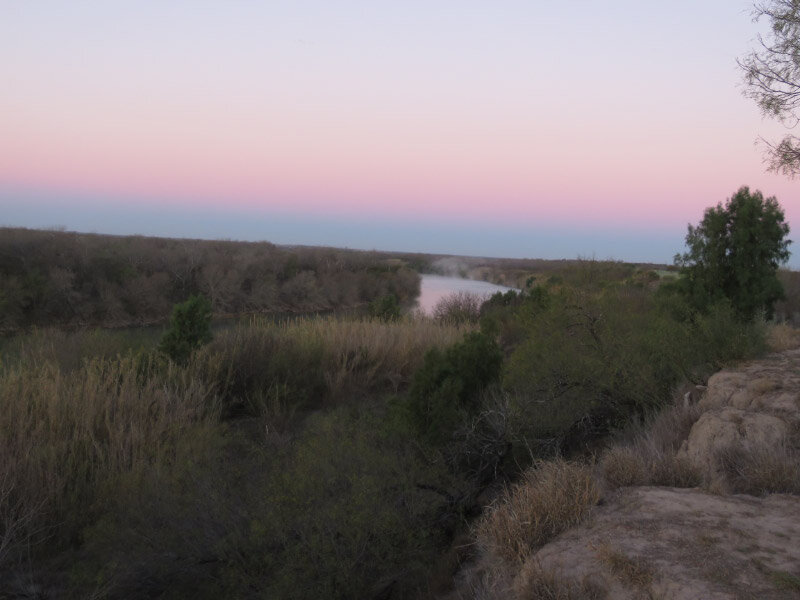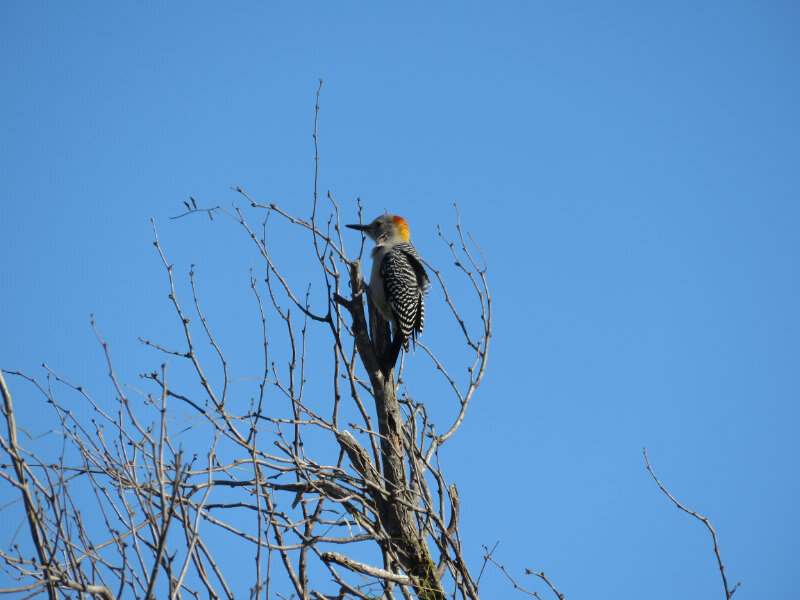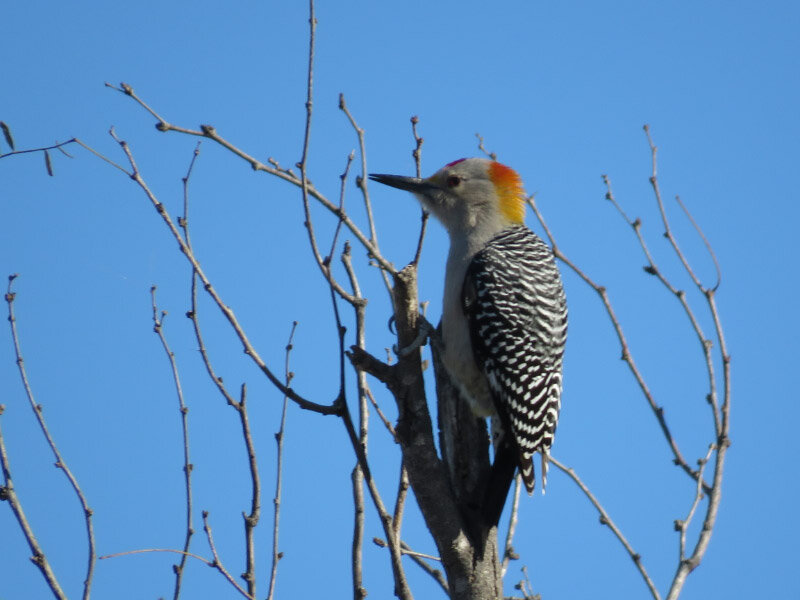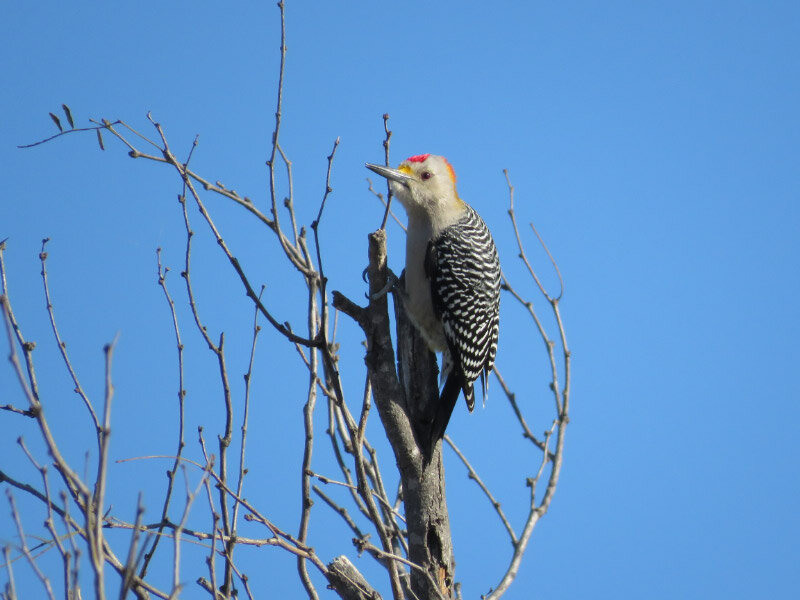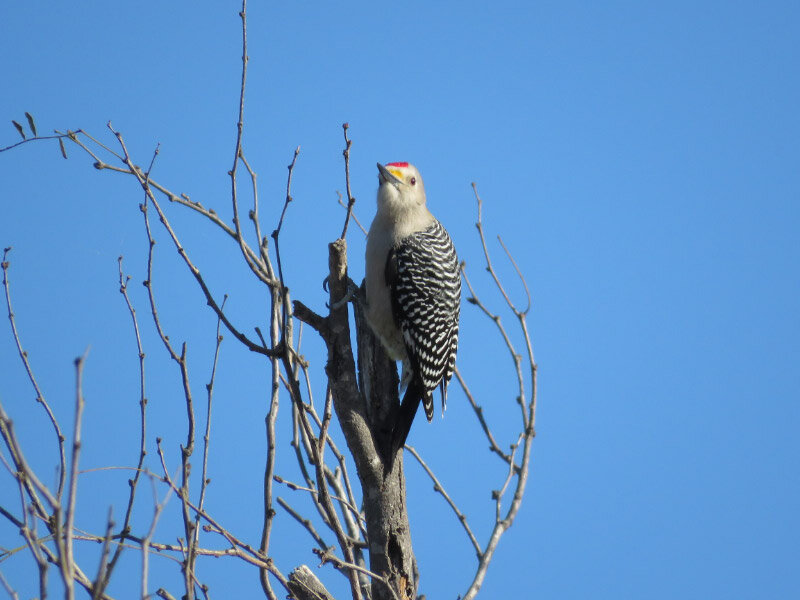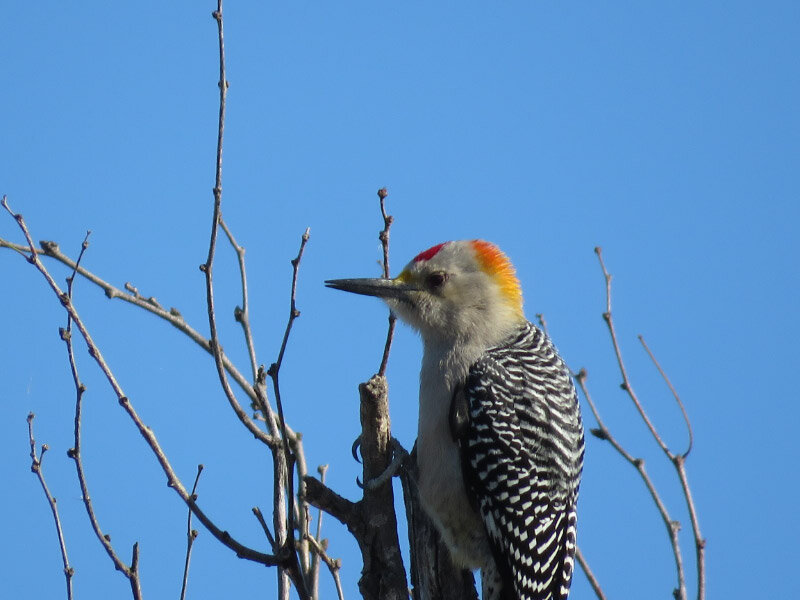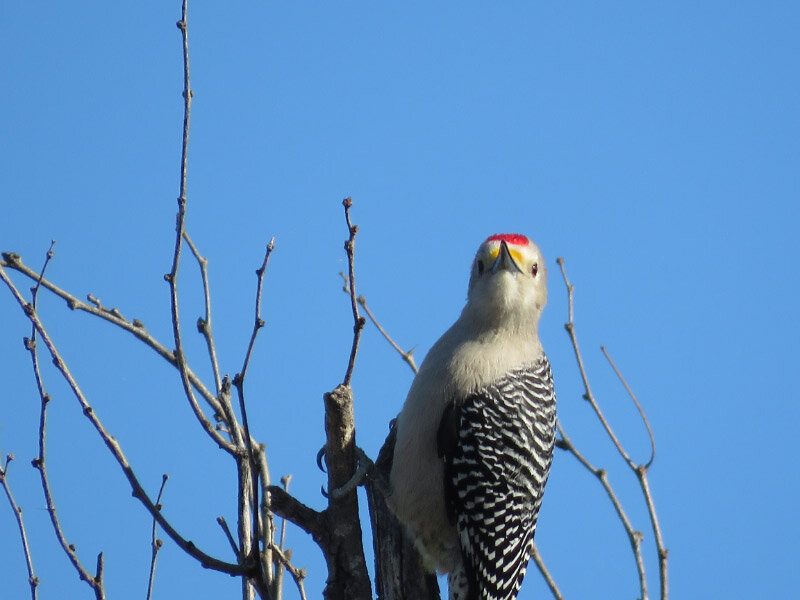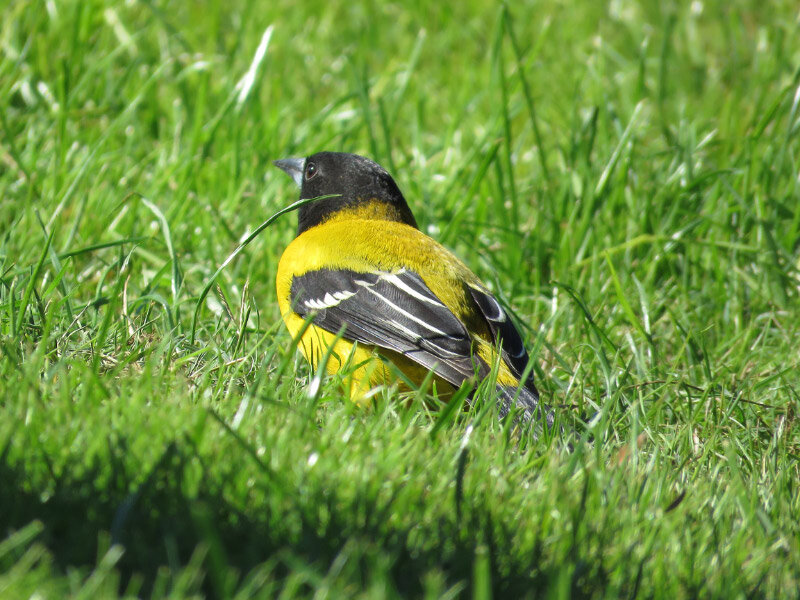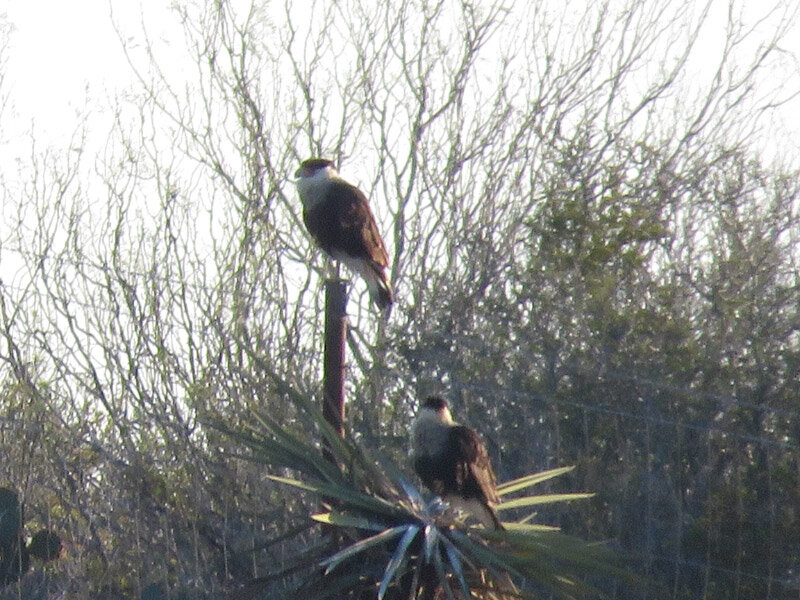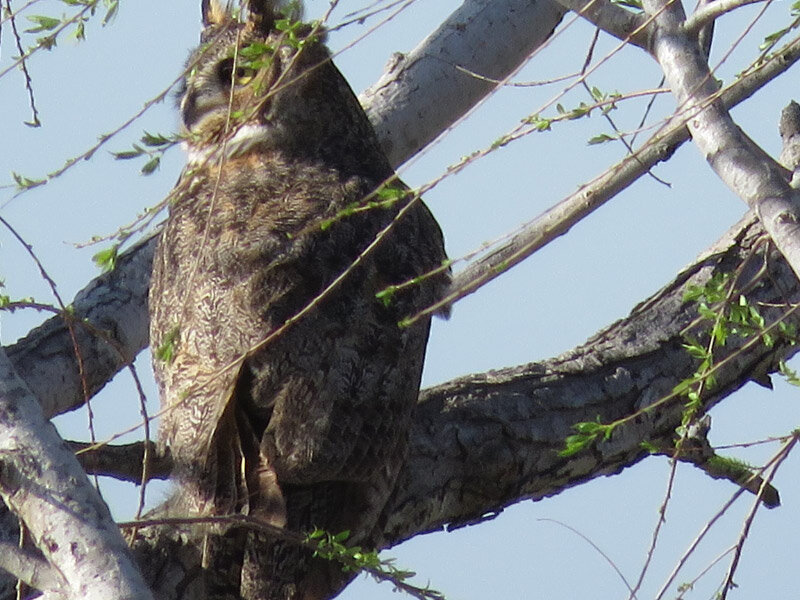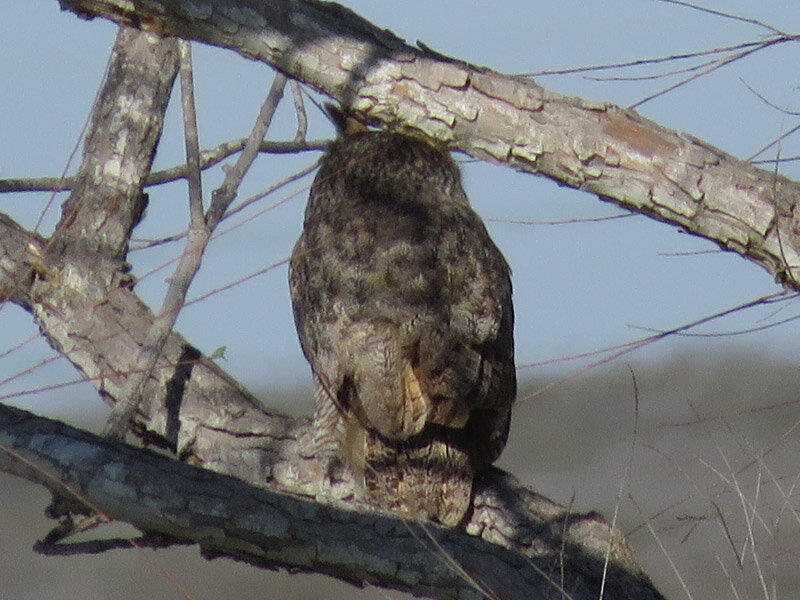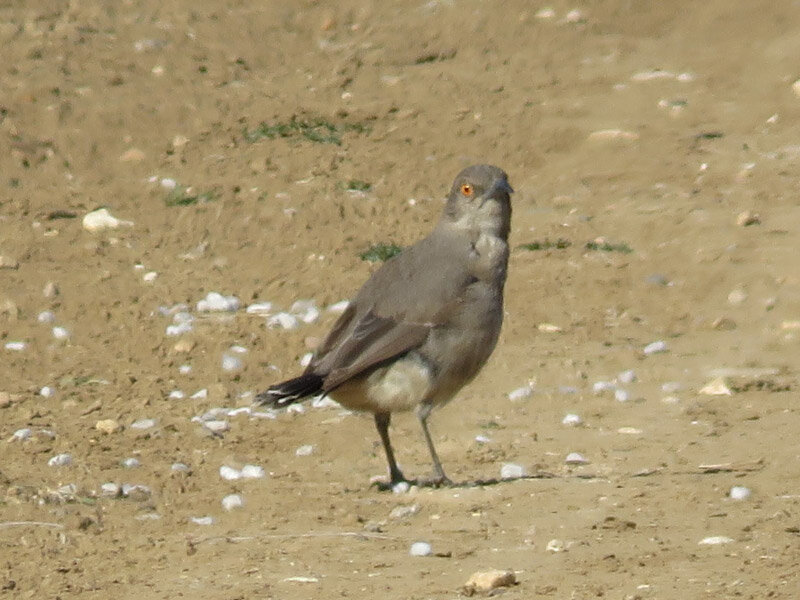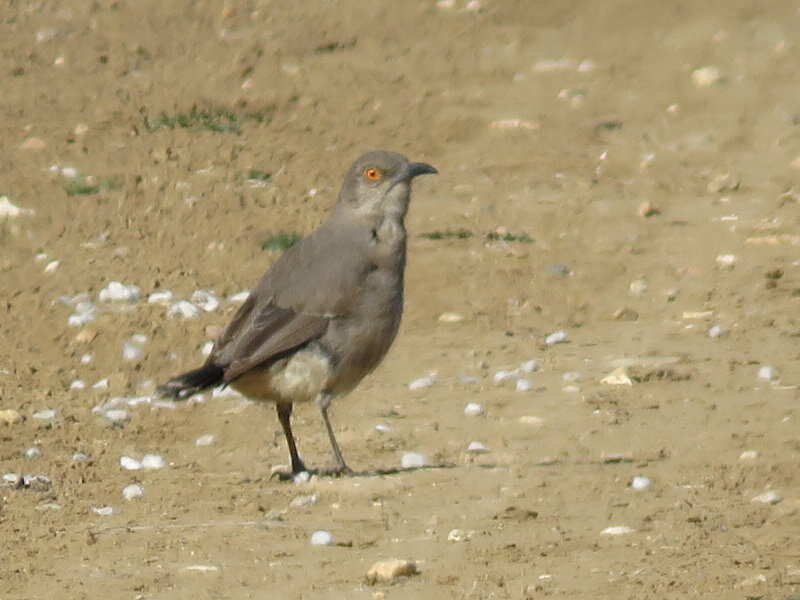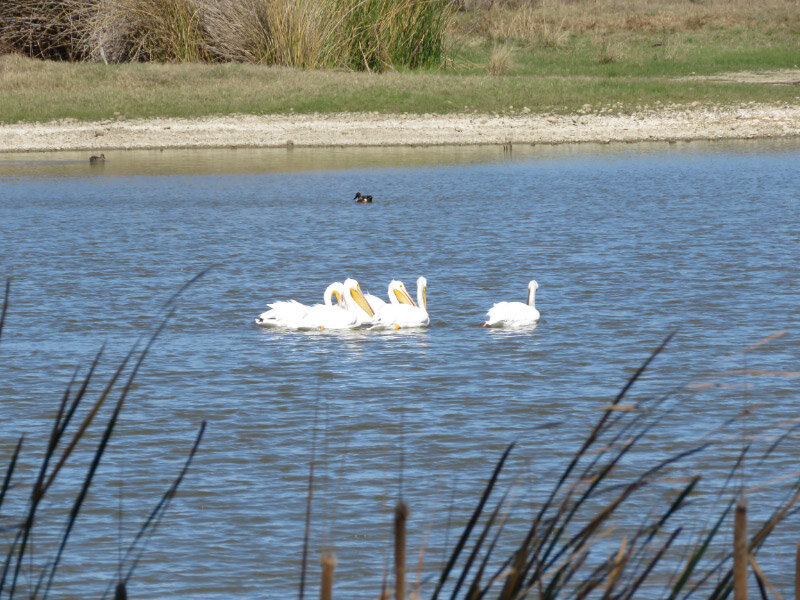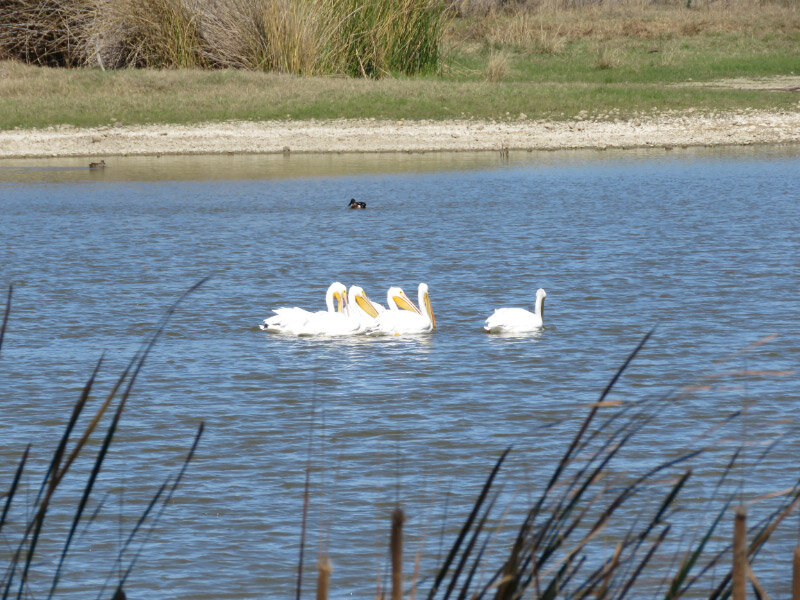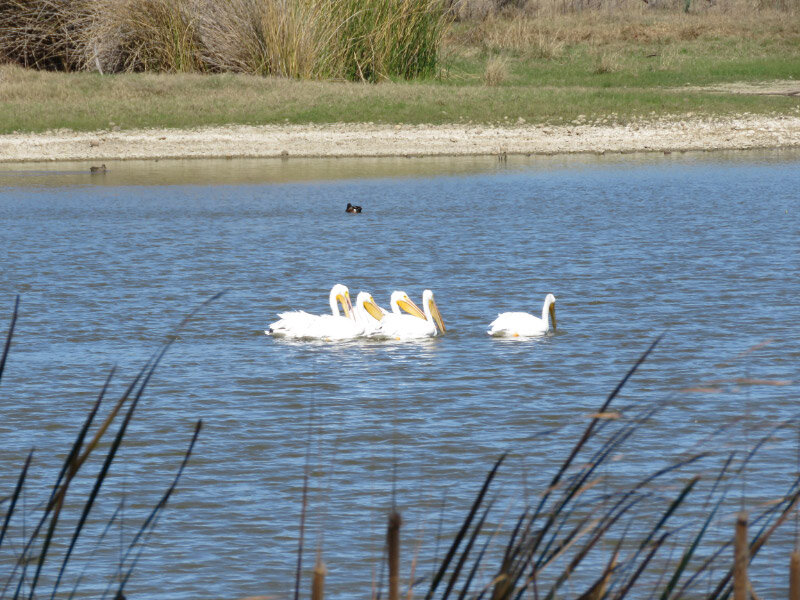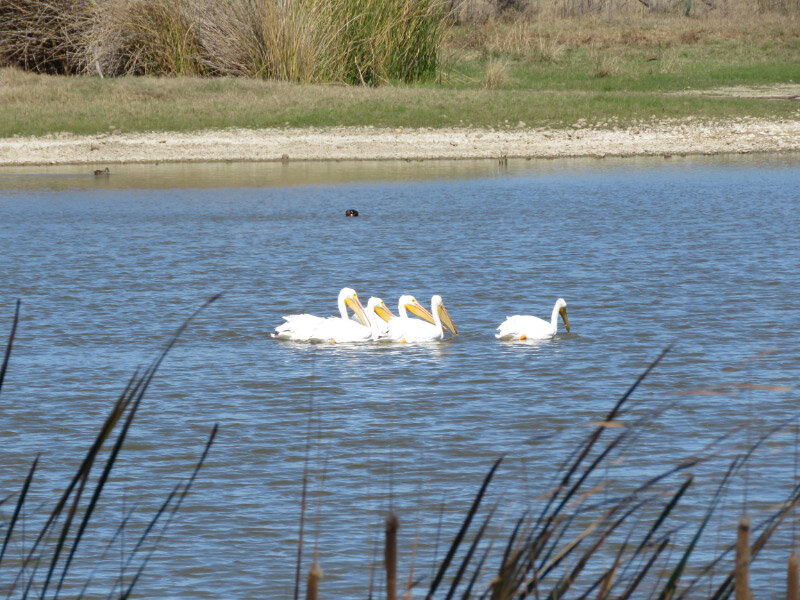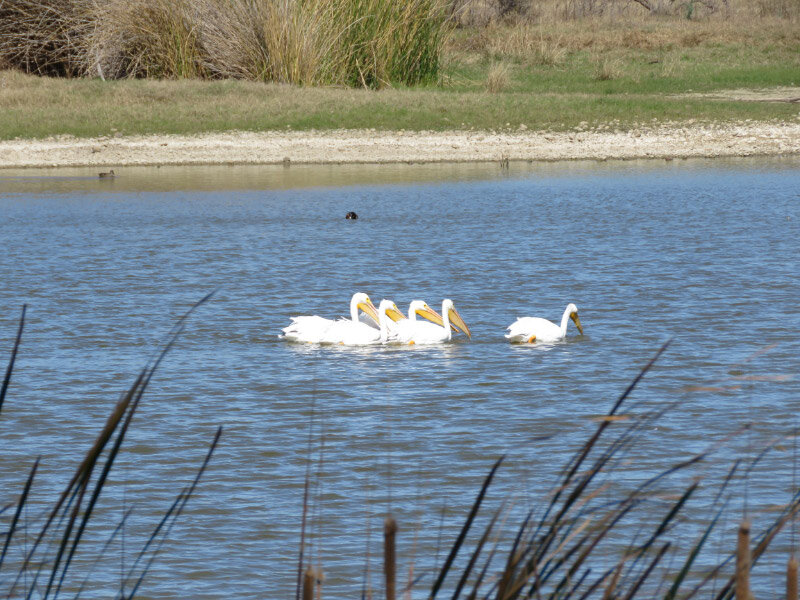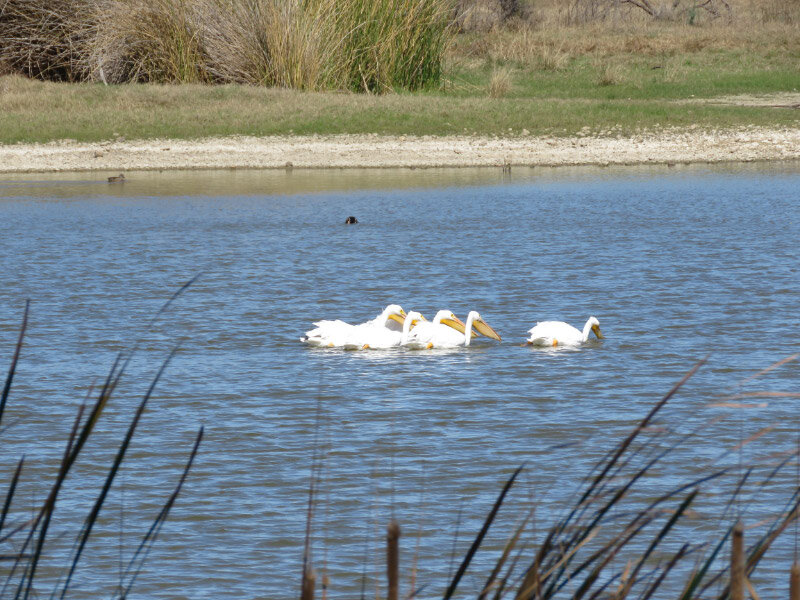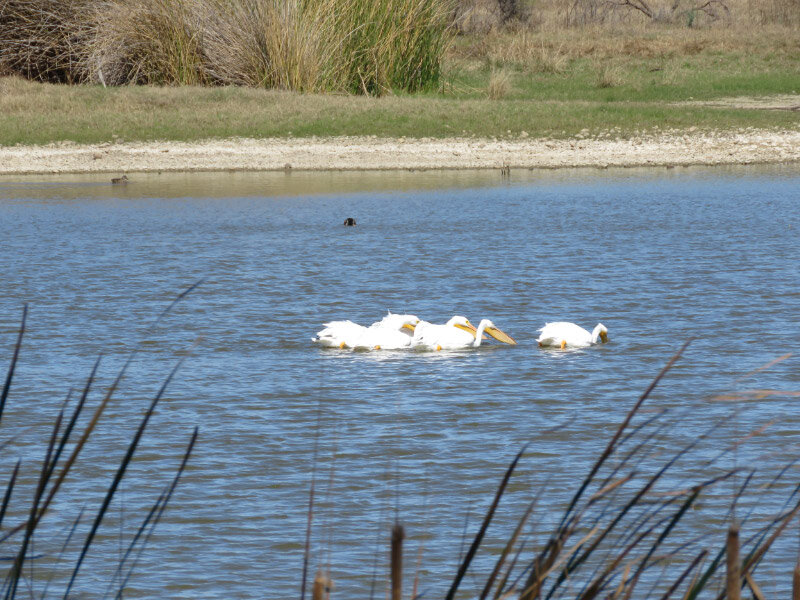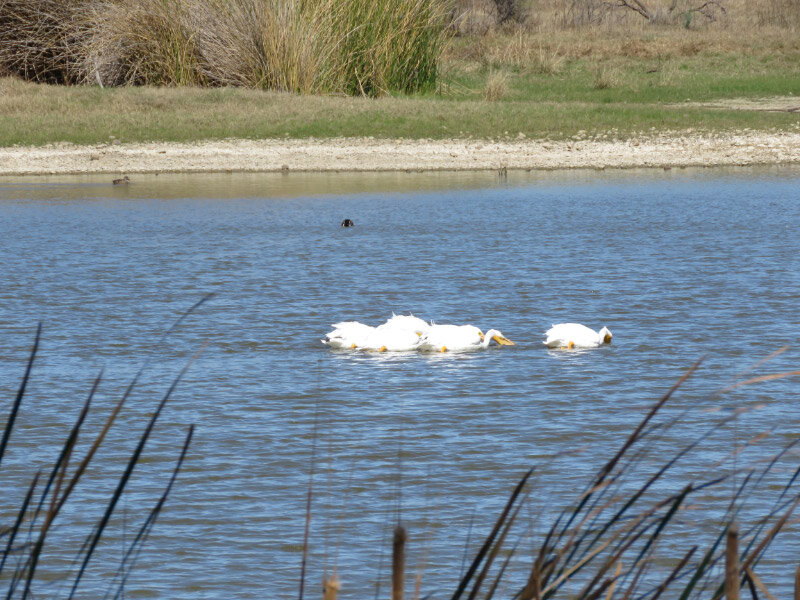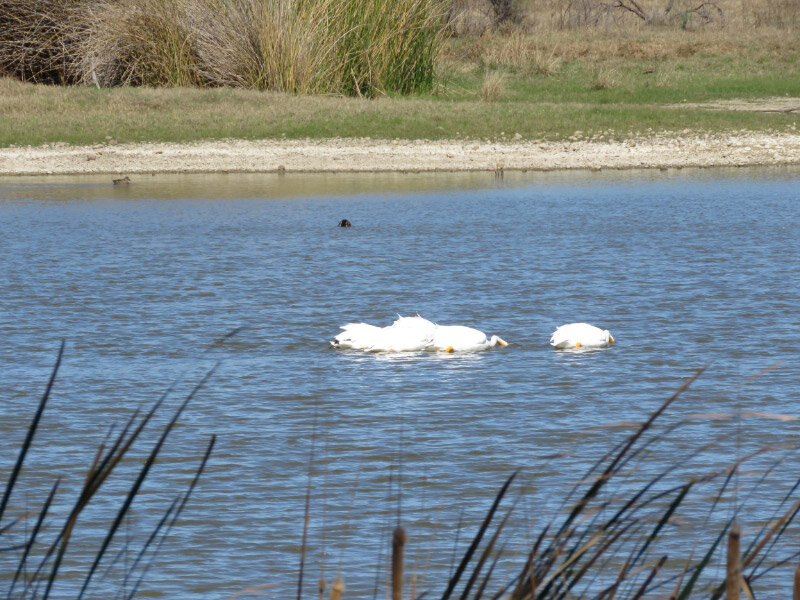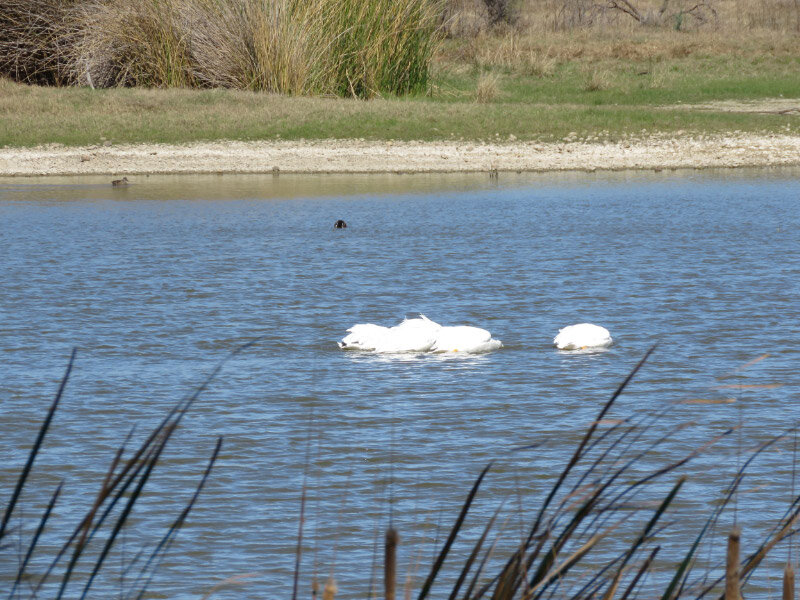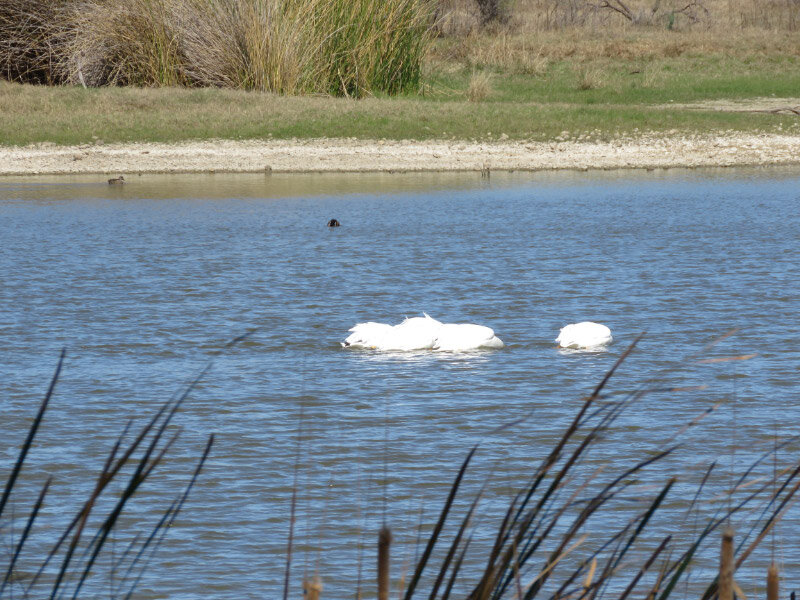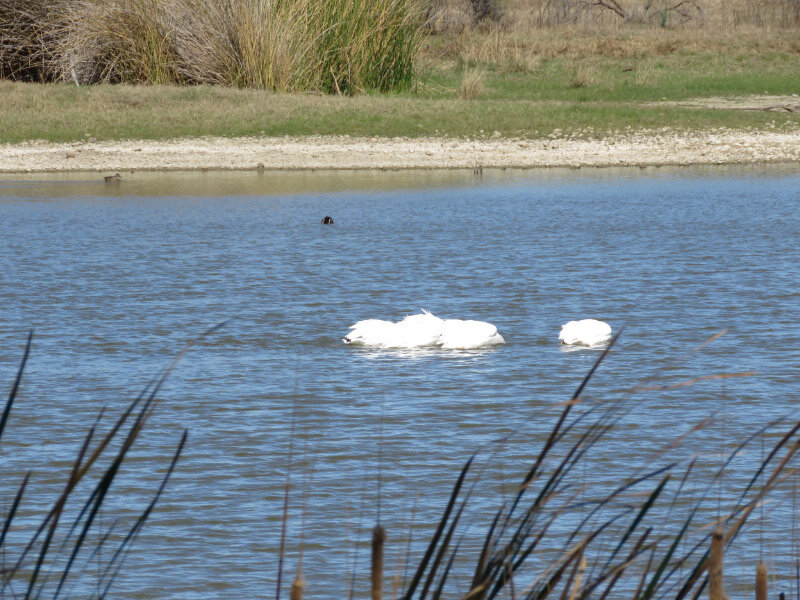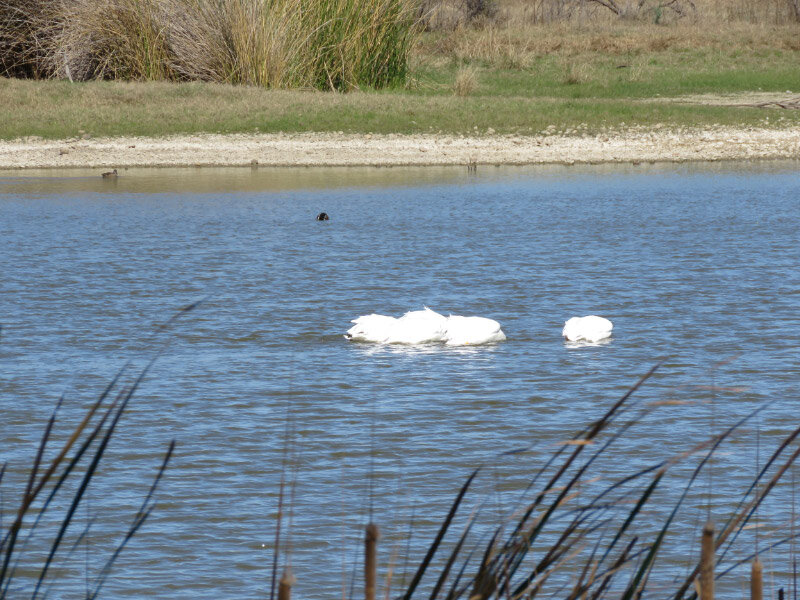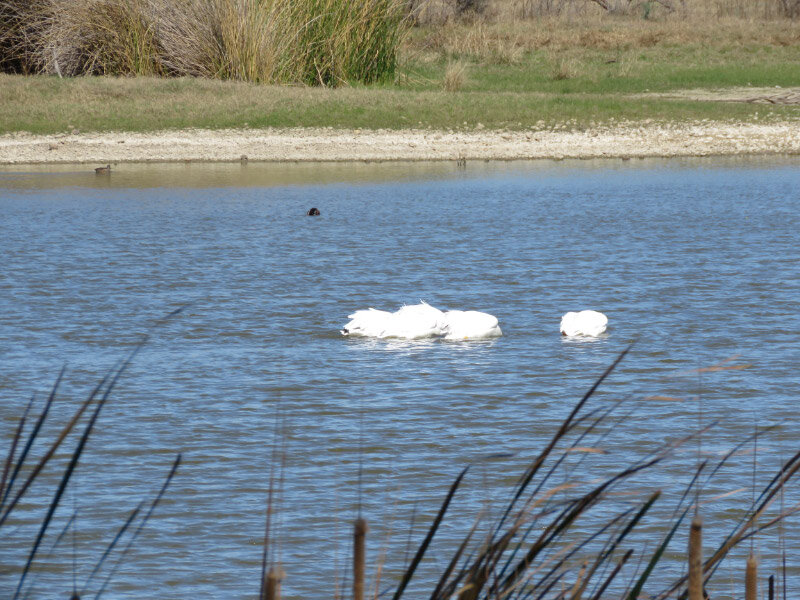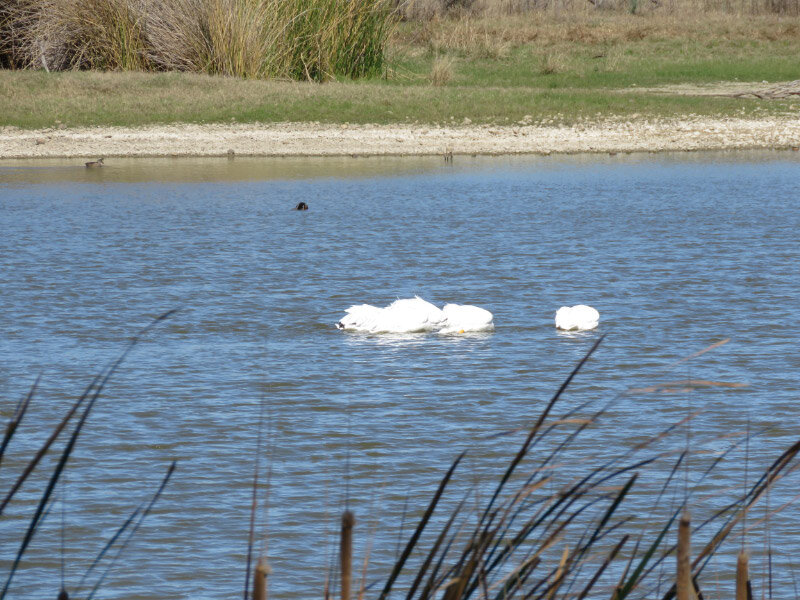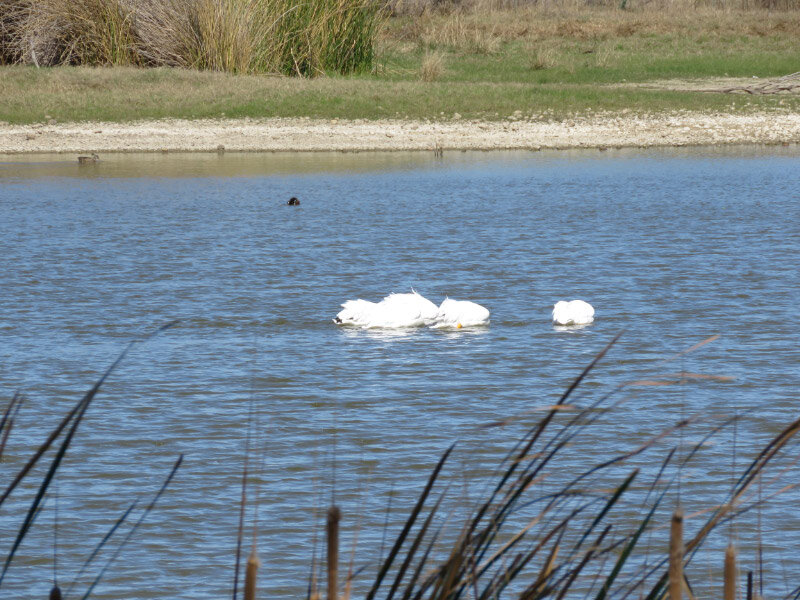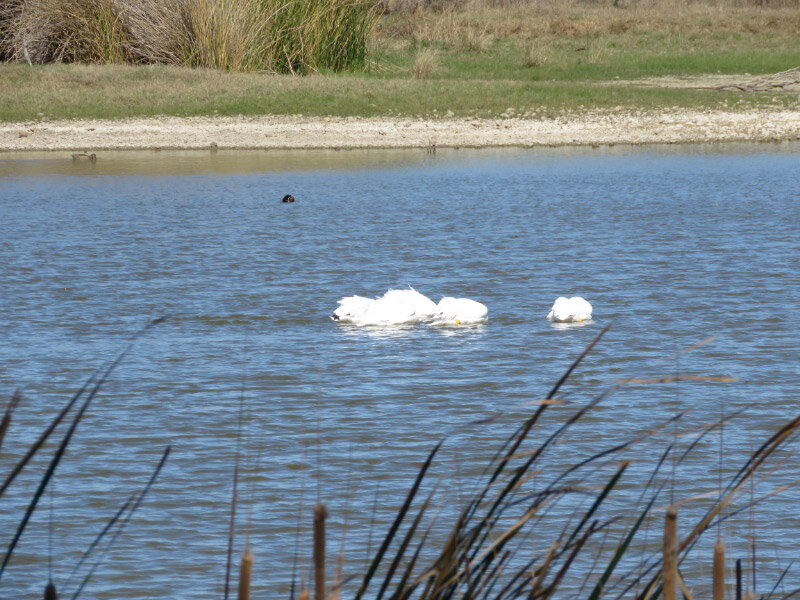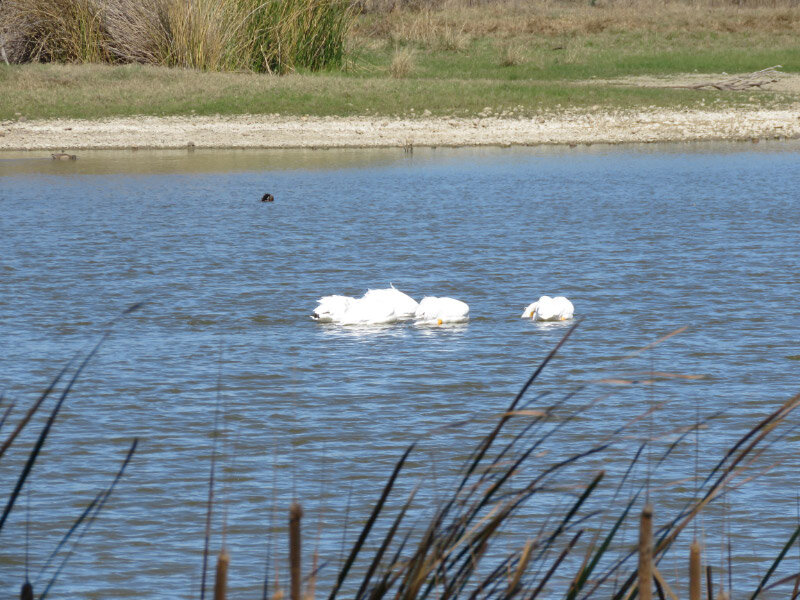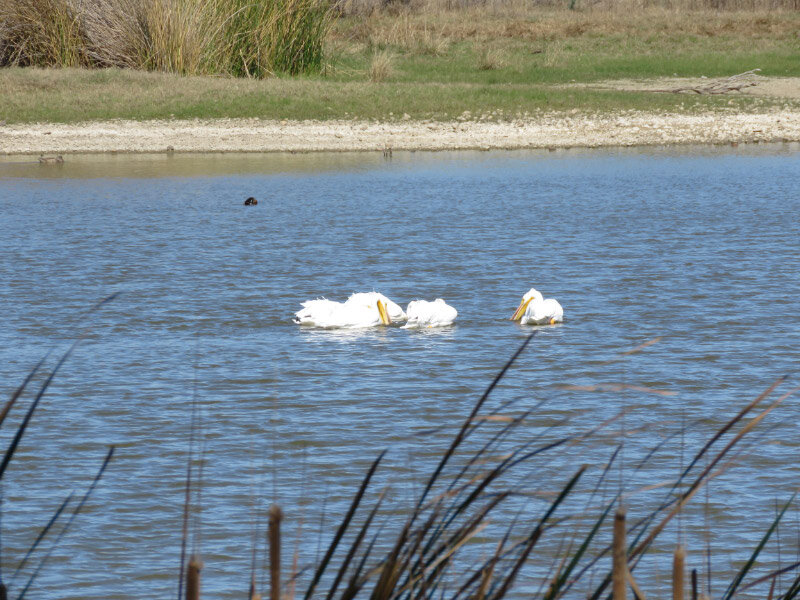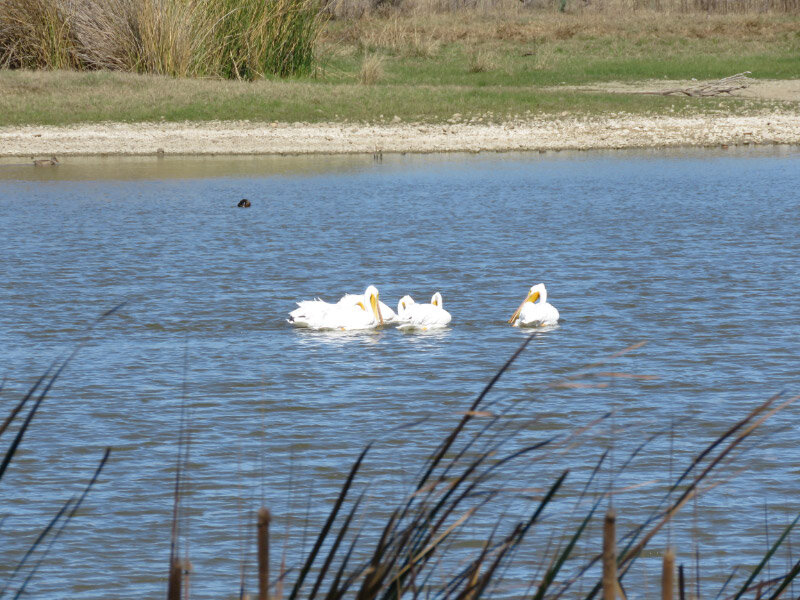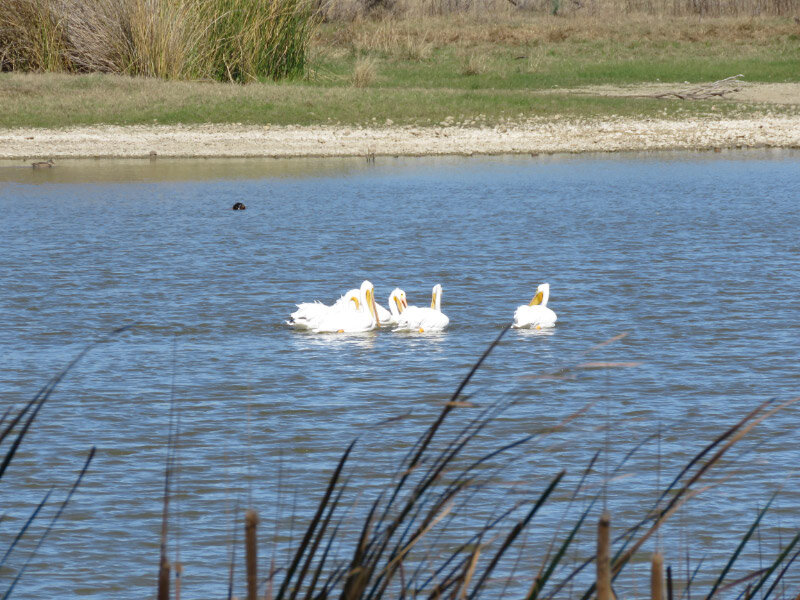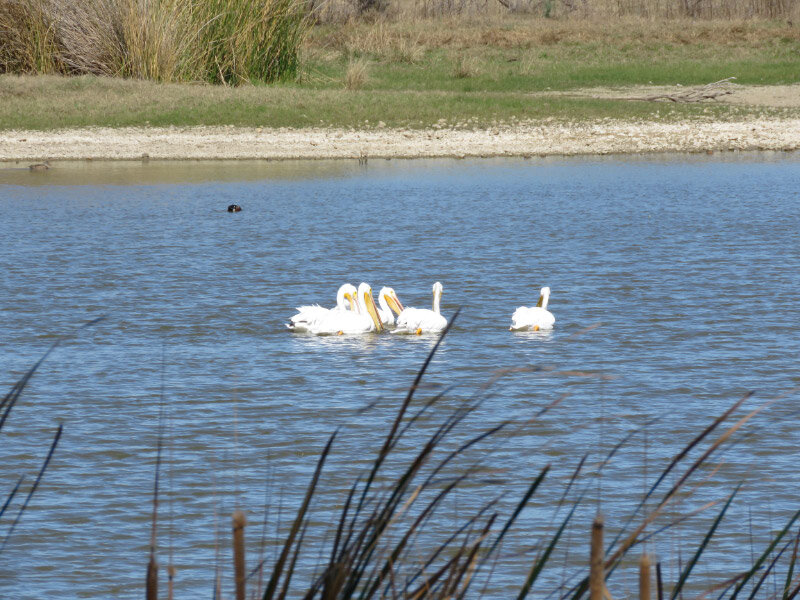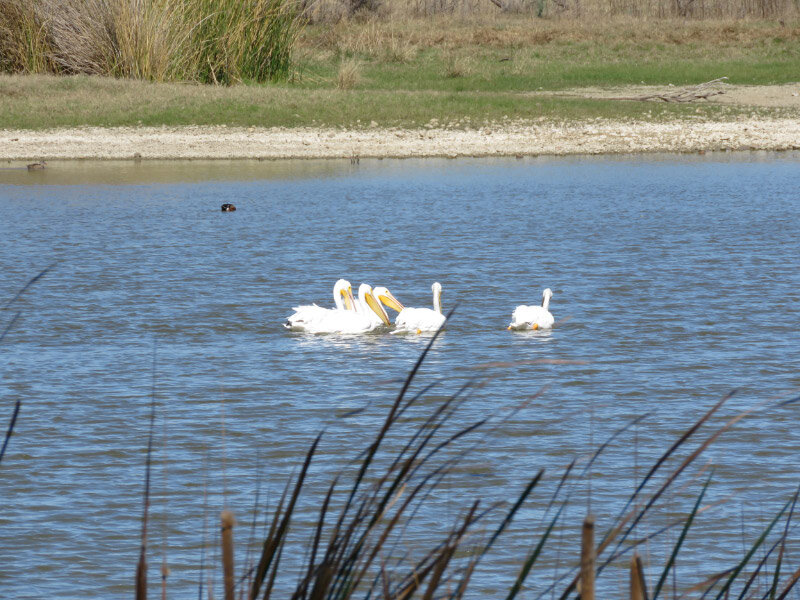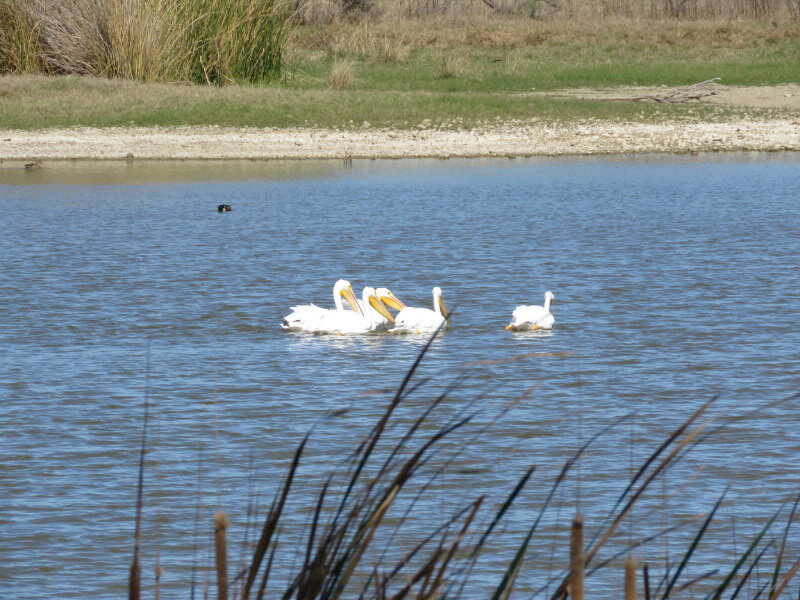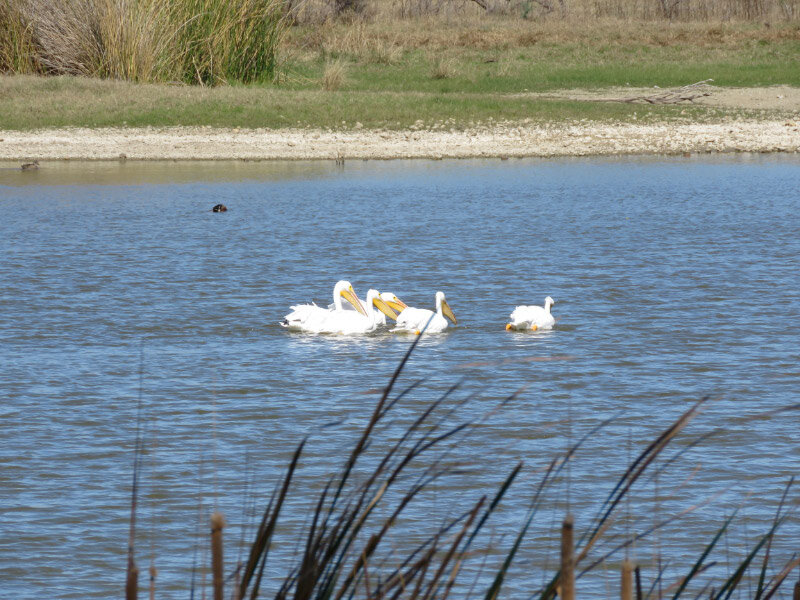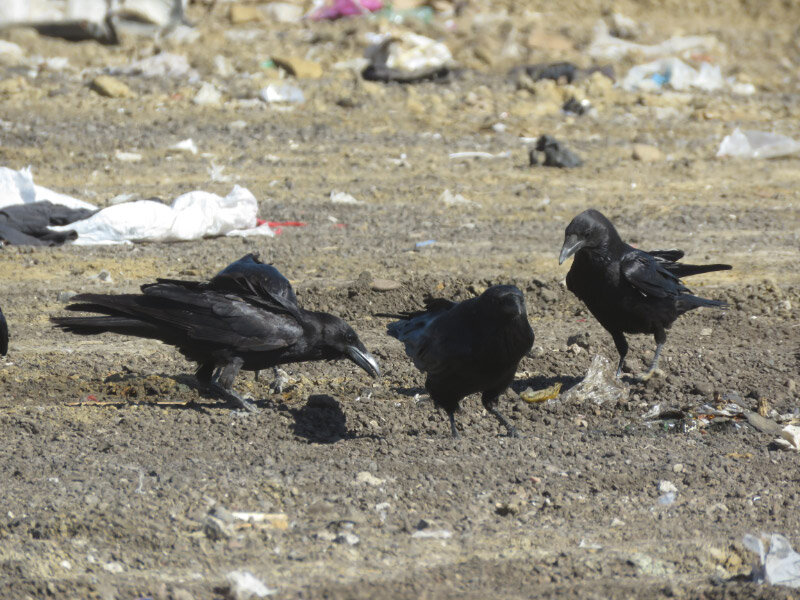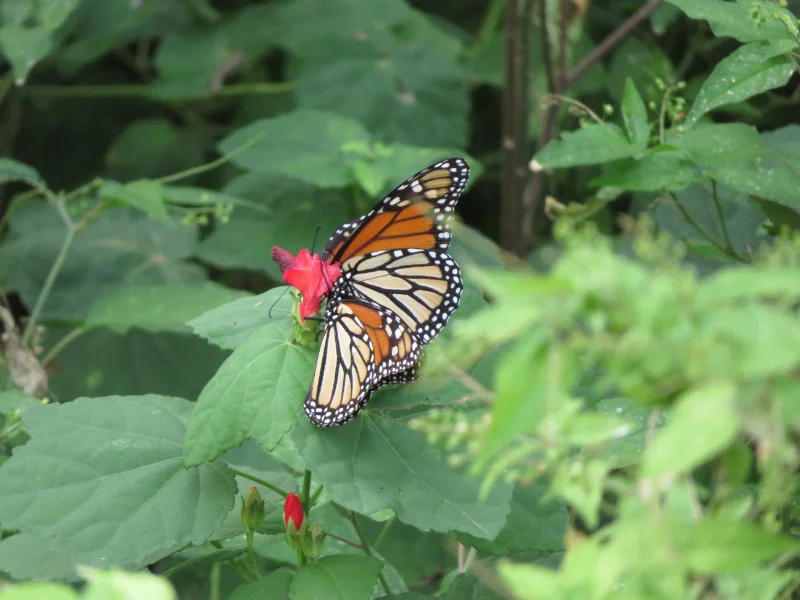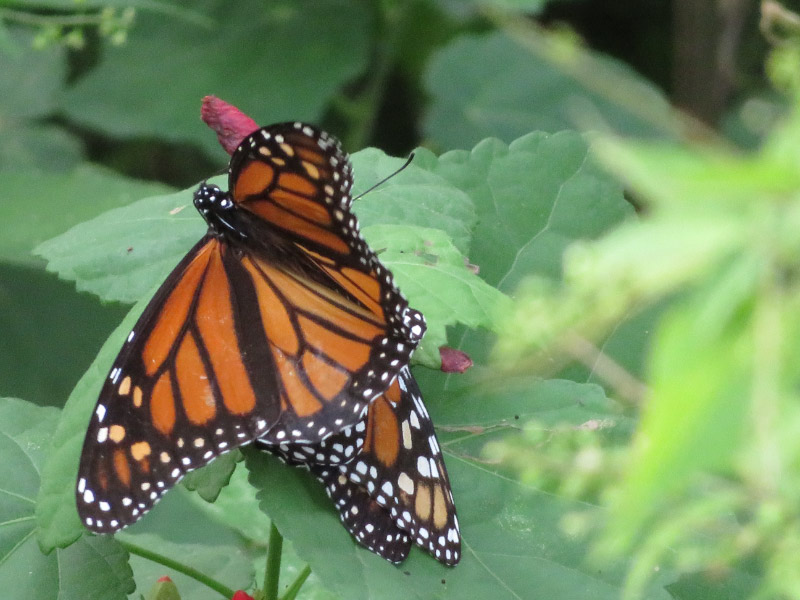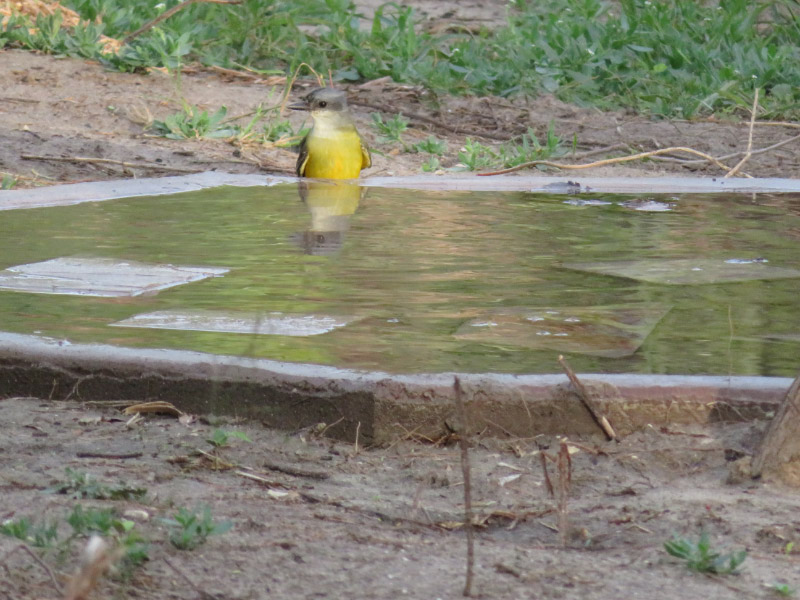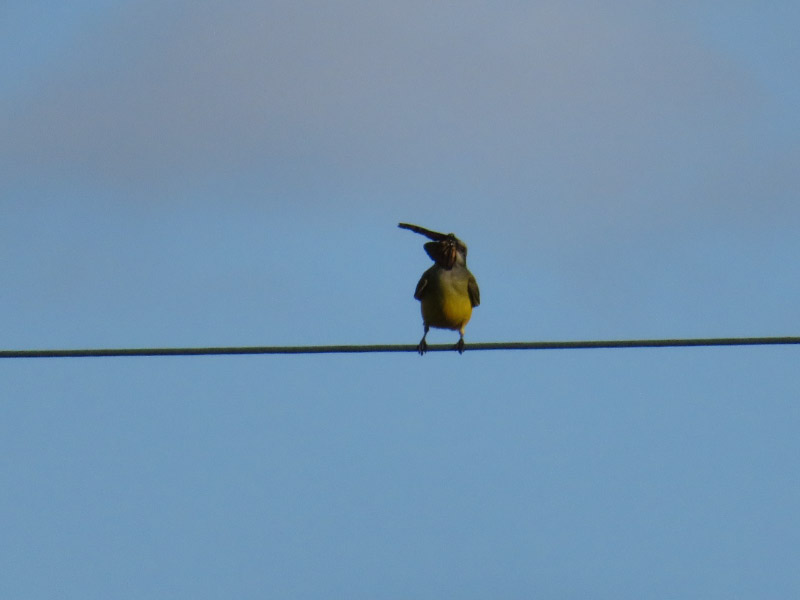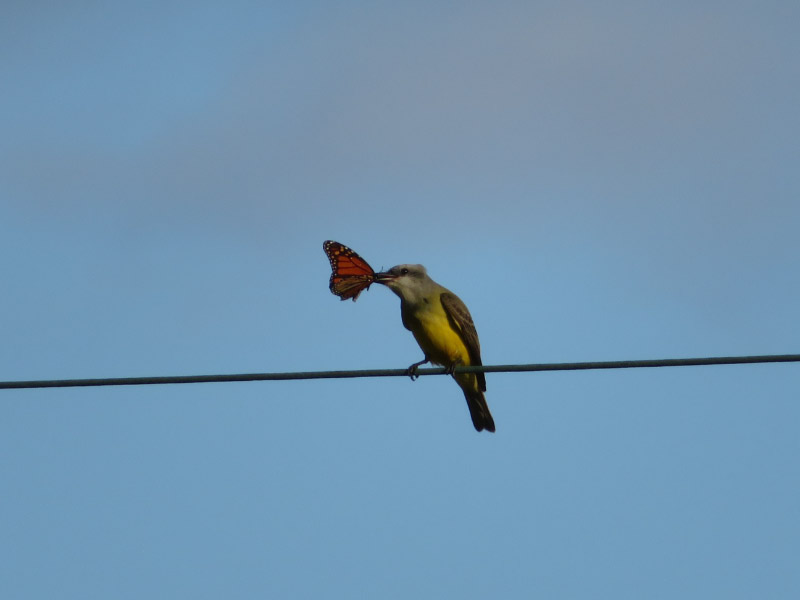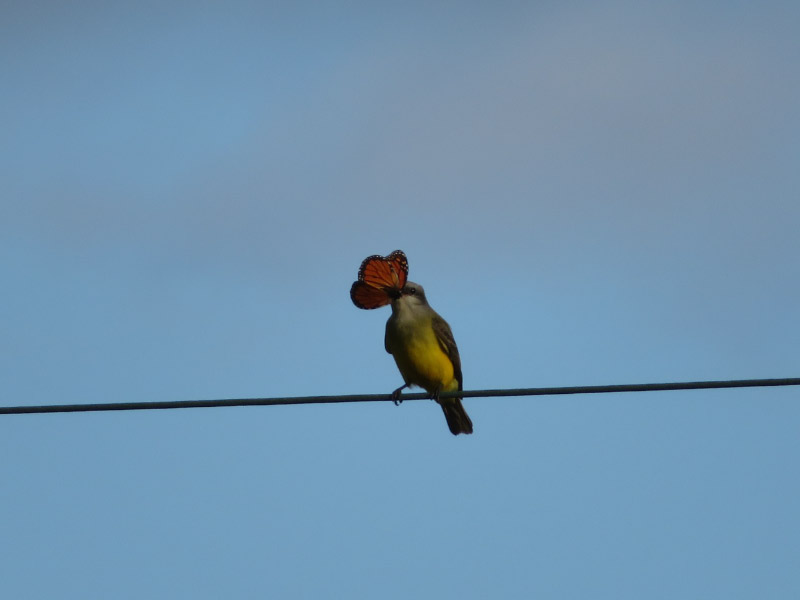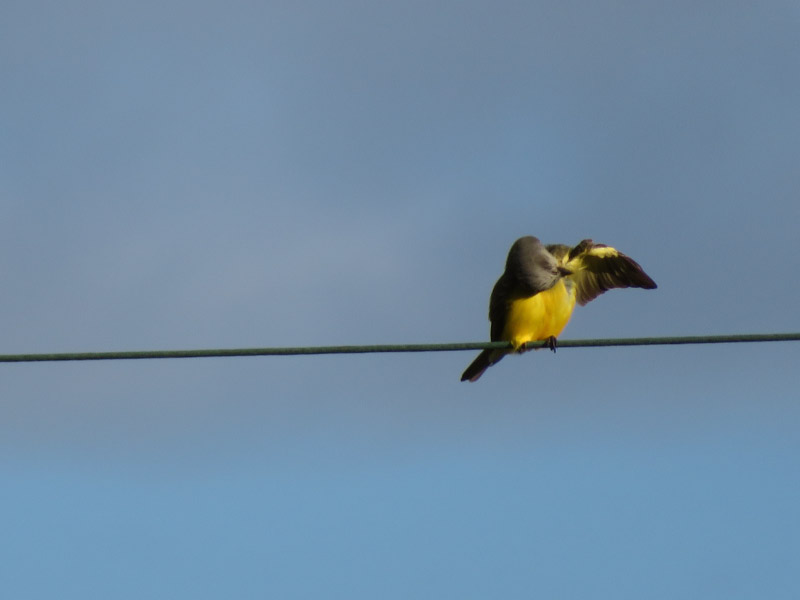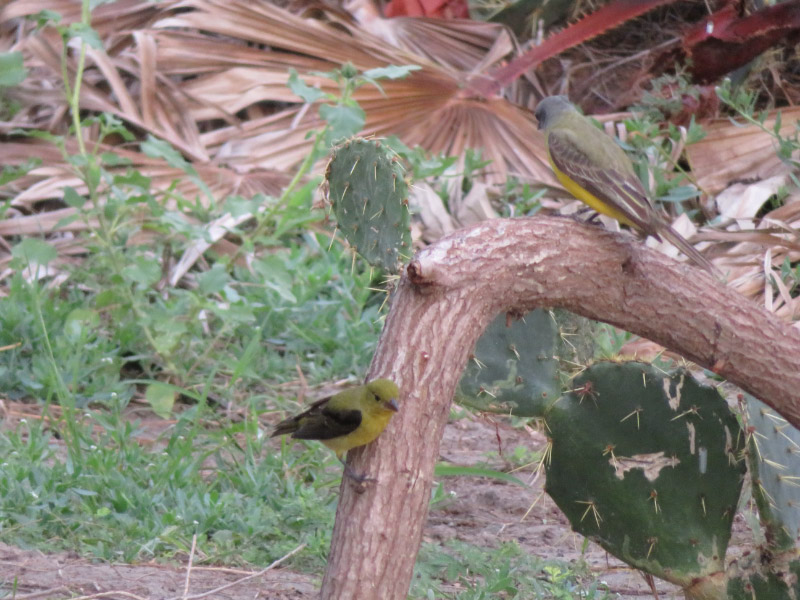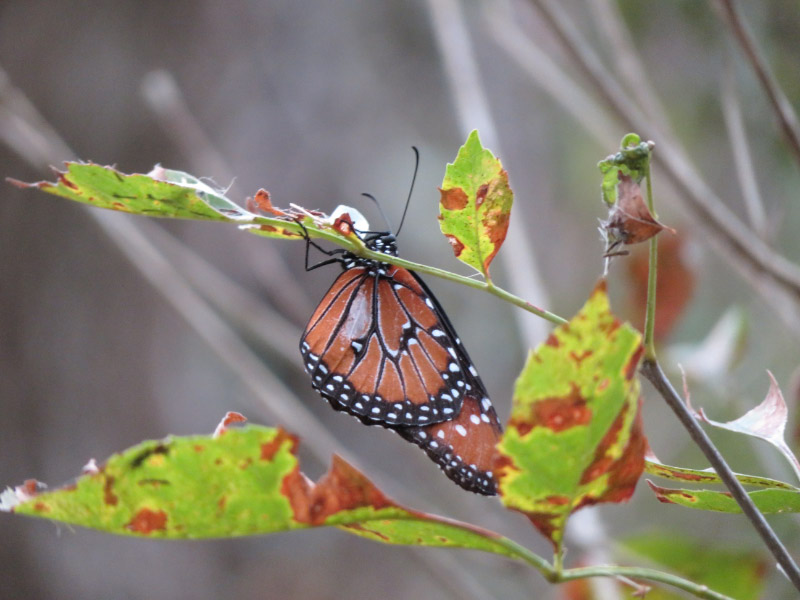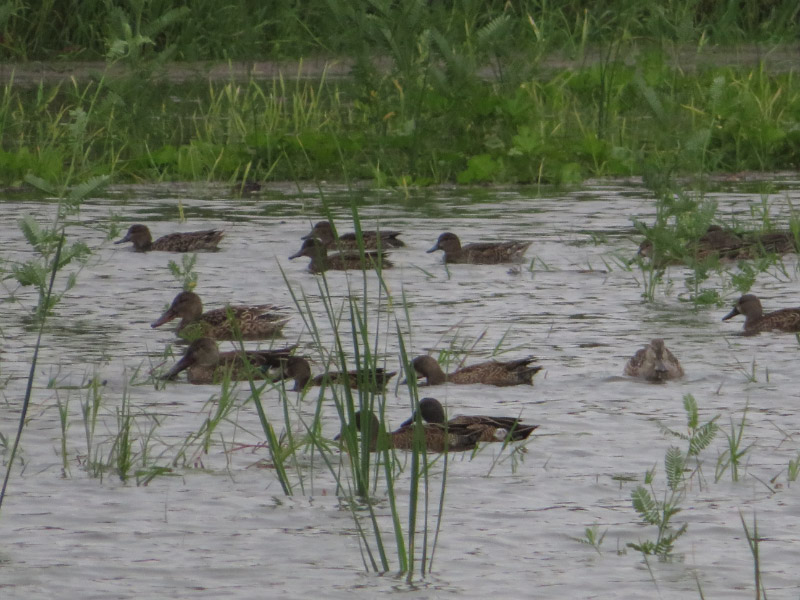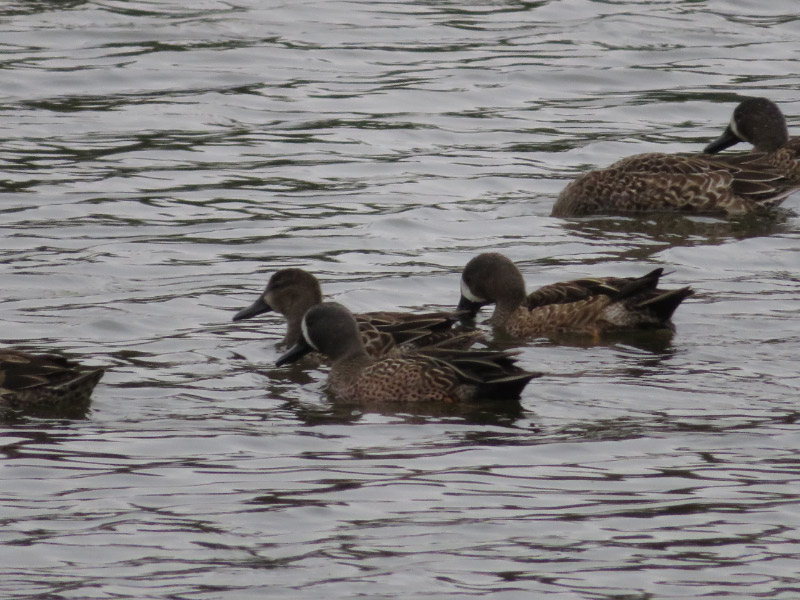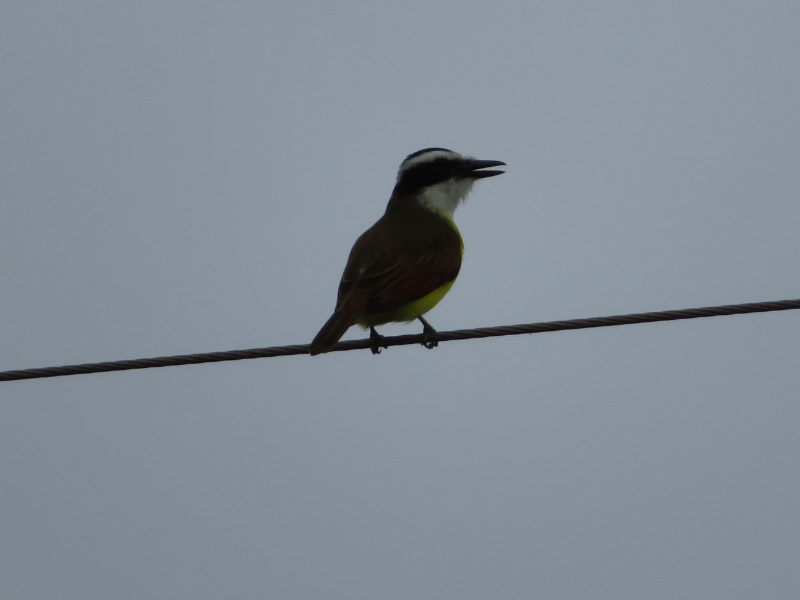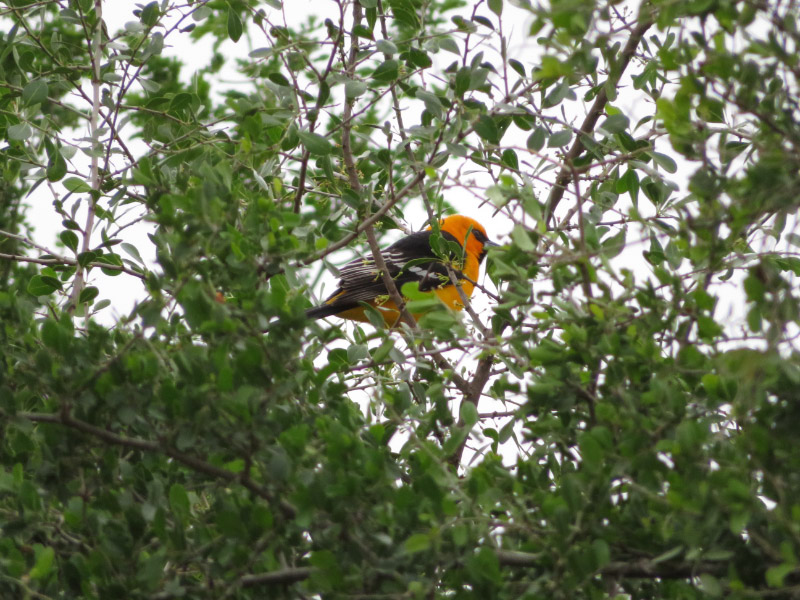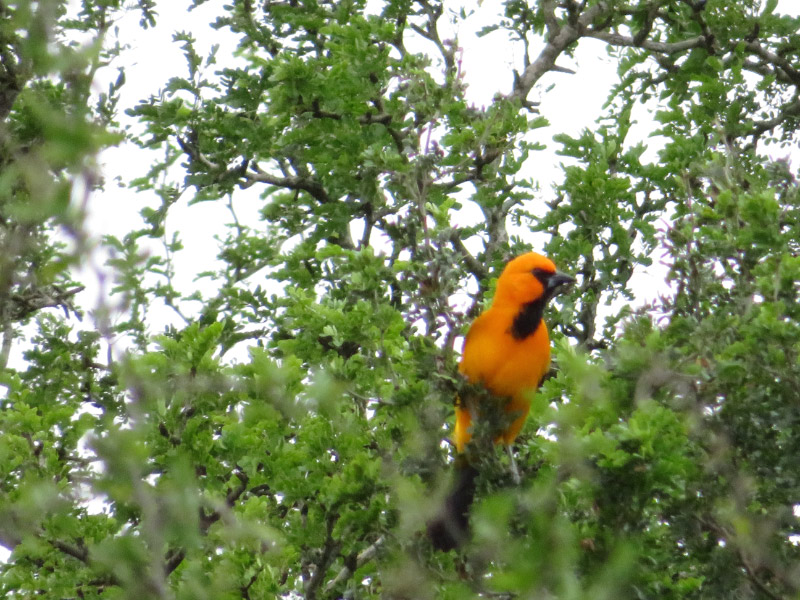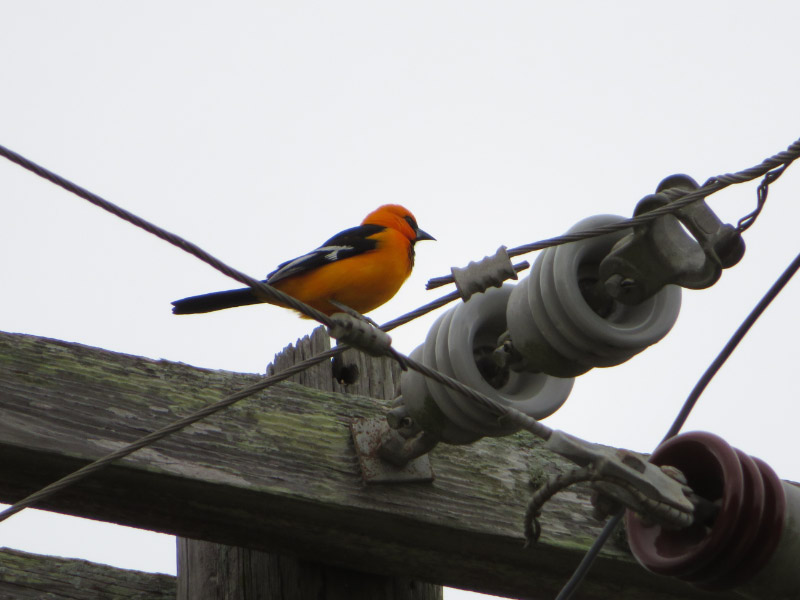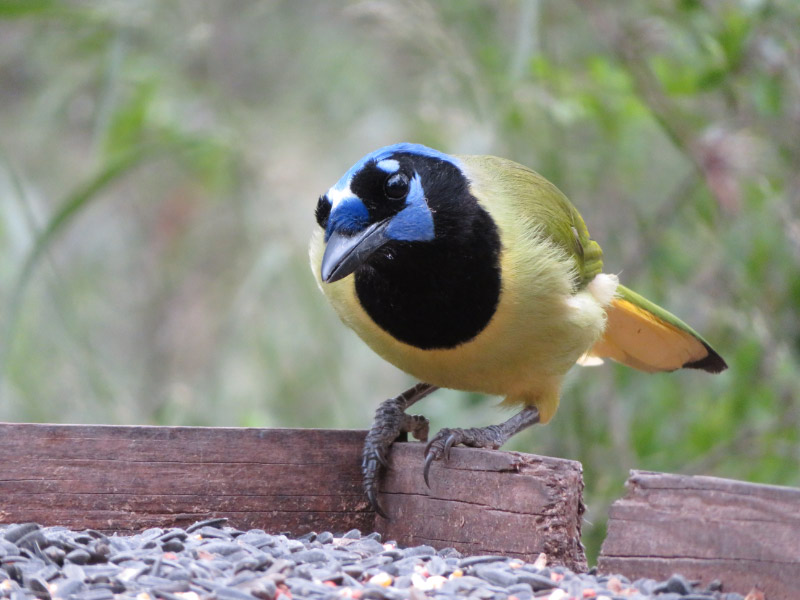Laredo Birding Festival – Day 3
/Our next day at the Laredo Birding Festival had us boarding the van at 6:40 AM for the Max Mandel Municipal Golf Course for its stunning views of the Rio Grande River waterfront with over 270 acres of old growth mesquite tree and vast arroyos. We road around in golf carts (part of the adventure) staying out of the way of a morning tournament between two schools. The golf course structures were newish, but the course had been laid out to maintain much of the native vegetation along the river. We were there just after the sun came up. The morning was cold, and strands of moisture rose from the river. We had good river views all through the morning.
My first bird picture for the day was a Pyrrhuloxia. There is just barely enough light to distinguish the coloring…definitely not a cardinal.
As we headed over to where the golf carts were parked, I photographed some mistletoe….I liked its shape and density compared with the branches of the winter tree.
We paired up for the golf carts; I let my husband drive; it was a new experience for both of us since we are not golfers. The Red-billed Pigeon is just barely a US bird….and the golf course is known in the area as a good place to spot them.
The Eurasian Collared Dove was also around. The birds were introduced in the Bahamas in the 1970s…were in Florida by the 1990s…and rapidly colonized most of North America.
We saw Great Kiskadees across the river…and finally saw one on the US side so we could include it in our count of birds seen at the golf course.
The couple in the golf cart in front us spotted some American Pipit foraging in a grassy area. I was glad we were directly behind them and stopped to get some pictures.
The Yellow-fronted Woodpecker is not one that we see in Maryland. We saw several at the golf course and the sunny day made them easy to photograph.
We had lunch and a walk at the 180 Ranch – a little ways from the golf course along the Rio Grande. We did see some cows near a pond we stopped at on our way into the property.
Lunch was at the hunting lodge; they had left some snacks for us; I enjoyed the only banana for the trip (they didn’t have any in the breakfast buffet which is my usual source of fresh fruit when I’m traveling). After the hike, we sat in the shade around the hunting large and observed birds coming to feeder and the brush surrounding a very lush (obviously watered) patch of grass. There were small flocks of Northern Cardinals foraging…similar to what we had seen the previous day.
A Black Vulture posed for a portrait before taking off again to soar. The area also has Turkey Vultures as we do in Maryland.
There were several Pyrrhuloxia around as well. They were more cautious than the Cardinals.
The Green Jays can be raucous. They are a challenge to photograph because their eyes disappear in to the black around their eyes.
The Audubon’s Oriole flew in as our group lounged in our comfortable chairs. Getting a photograph of it was the high point of the day!

